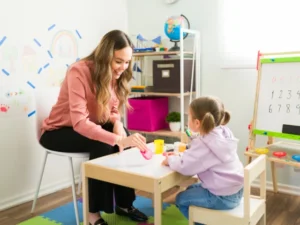What is Art Therapy?
Art therapy is a mental health profession in which an art therapist encourages individuals to use art media, the creative process, and the resulting artwork to explore their feelings, reconcile emotional conflicts, foster self-awareness, manage and regulate behaviors, reduce anxiety, and increase self-esteem.
Some people struggle with verbalizing thoughts and emotions. This could be caused by discomfort with verbal expression, a lack of sufficient language, or exposure to some kind of trauma which can constrict the access to finding the words to describe how we think or feel. Because of this, art therapy can be an accessible modality for many people who may need an alternative to verbal therapy. An art therapy session can occur without a person needing to talk, as the expressions can occur nonverbally, but ultimately, most people will work towards bringing words to their feelings and experiences.Art therapy can also benefit those that are comfortable with verbal expression. Because creating art engages a different part of the brain than when speaking, this can help facilitate bringing realizations into conscious awareness.
During art therapy, the focus is typically on the process and/or on the metaphors and symbols within the finished product. For this reason, a person does not need to be artistically inclined in order to benefit from art therapy. However, people that are hesitant about engaging in therapy and are drawn to art, often find doing art therapy to be a comfortable transition into treatment.
During a session, art making may also be used to promote and practice relaxation or it may be used to actively work through an issue or challenge in the moment. For example, it can provide the opportunity to practice staying focused on a task, managing anxiety when the art product does not come out perfectly, or learning how to handle frustration when an art task becomes difficult.
Art therapy sessions can include a wide range of materials and processes. You may draw, paint, work with clay, create a collage, and more. The materials you use will depend on your interests as well as the therapeutic benefits of certain types of art materials for your specific situation.

Navigating Grief: You Are Not Alone
Grief is a universal experience, yet it is deeply personal. It is the natural response to loss—whether it’s the death of a loved one, the



